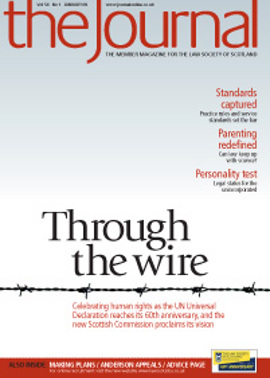Medicines: the wrong cure
The European Commission has been undertaking a sector investigation into the workings of the pharmaceutical industry. It has now published its interim report, which may be read at http://ec.europa.eu/competition/ sectors/pharmaceuticals/inquiry/ preliminary_report.pdf . Comment is invited on the report to COMP-SECTOR-PHARMA@ec.europa.eu by 31 January 2009.
The authorities have become concerned that the introduction of new medicines and of generics has been slower and less frequent in recent years than one might have expected in a perfectly working market.
The report acknowledges the importance of innovation and of IP generally, but the main thrust is directed to the perceived problems of bringing generics speedily to market and the activities of the research based companies which it is alleged are the main root of the problem. The hostility of the authors to the research based industry is clear from both the focus of the report and the extraordinary tenor of the launch conference, which can be viewed at http://ec.europa.eu/ competition/sectors/pharmaceuticals/ inquiry/index.html. This seems a strange and shortsighted attitude, as in a high cost market such as the EU one would have thought policymakers would have been seeking to promote knowledge based opportunities, since the largest generic houses and so potential beneficiaries of any changes are based outside the EU.
The inquiry looked into relations between innovators, and between innovators and generic houses, but inexplicably failed to look at relations between generic houses, some of which are substantial multinationals or major local players. The size of some of these enterprises, taken with the difference in pricing between the US and Europe – patented products are usually cheaper in Europe but generics more expensive – would suggest that any proper sector investigation should also explore this aspect.
Toolbox components
The most significant aspect of the report identifies a “toolbox” of activities the report alleges innovators use to block generics. These include:
• Patent clusters – where a product is covered by multiple patents some of which may have been filed quite some time after the initial patent. The report notes that patents are often filed to block a competitor entering the market, or with a view to licensing the idea rather than utilising the invention itself.
• Patent litigation – the report notes that 62% of cases are won by the generic house, which it implies is suggestive of something wrong with either the patent or the motivation in bringing the case.
• Patent settlements – the Commission is particularly troubled by cases where there is some transfer of value between the originator and the generic house along with an agreed restriction on entering the market.
• Interventions in the regulatory process – where companies will raise concerns about some aspect of the applicant’s dossier. These are very rarely successful, but cause an average delay of four months.
• Life cycle programmes – where companies try to switch patents to a newer patented form of the product before the patent on the old product runs out.
Selecting a target
What then can we expect from the Commission? The report and many research based and generic companies would like to see something more done to harmonise regulatory and pricing requirements, which are a cause of substantial cost and delay. Similarly there is fairly general support for the much discussed European Patent and for a more integrated enforcement system. The report notes that in 11% of the cases which reached final judgment, courts in different parts of the EU reached different conclusions, and of course that does not take into account the many settlements that must have been influenced by concerns at this potential inconsistency. These areas of reform however would need cooperation from member states and across EU departments, and while clearly desirable and of particular benefit to smaller companies, they are unlikely to be introduced in the short term.
An easier target for the Commission would be to look at how companies use the patent system. It would not be surprising if there is some attempt to limit the terms of litigation settlements; however the FTC has been singularly unsuccessful with this approach in the US where value transfers are more common. Multiple patents – whether “weak” or not – would be hard to attack, given the many interested parties and international obligations such as TRIPS, so it is more likely that the Commission will look at overall conduct, perhaps requiring some element of intent.
This would be particularly problematic for SMEs, who can only afford to patent where they have identified the greatest risks, and for whom licensing is a key business strategy. Any challenges to the appropriateness of their behaviour would be adjudged with the benefits of hindsight. The potential for uncertainty and commercial bullying would be enormous. It is hoped that the Commission will eschew “quick fixes” in favour of addressing the larger issue of the insupportable costs of bringing new medicines to market.
In this issue
- Public law in Scotland
- Harmony in conflict management
- Tapping Reeve and his legacy
- Busy times at 60
- Living wills - why?
- Forward by the rights
- A cornerstone of rights
- Welcome for rejections takeup
- Sins of omission
- A time to buy?
- Parenthood reborn
- Persons unknown
- Front of the class
- Setting the standards
- Client service: the standards
- Judicial appointments: how you can take part
- ABS - the next phase
- Third parties and premature complaints
- Planning to perform
- Manual for the mind
- Computing on tap - or money down the drain?
- When resolution is not enough
- Ask Ash
- Making up lost time?
- Don't get caught short by transfer traps
- Collaboration: a new dimension
- Packed and ready
- Regulator on a roll
- Scottish Solicitors' Discipline Tribunal
- Website review
- Book reviews
- Medicines: the wrong cure
- Fraud alert! (and a cautionary tale)






